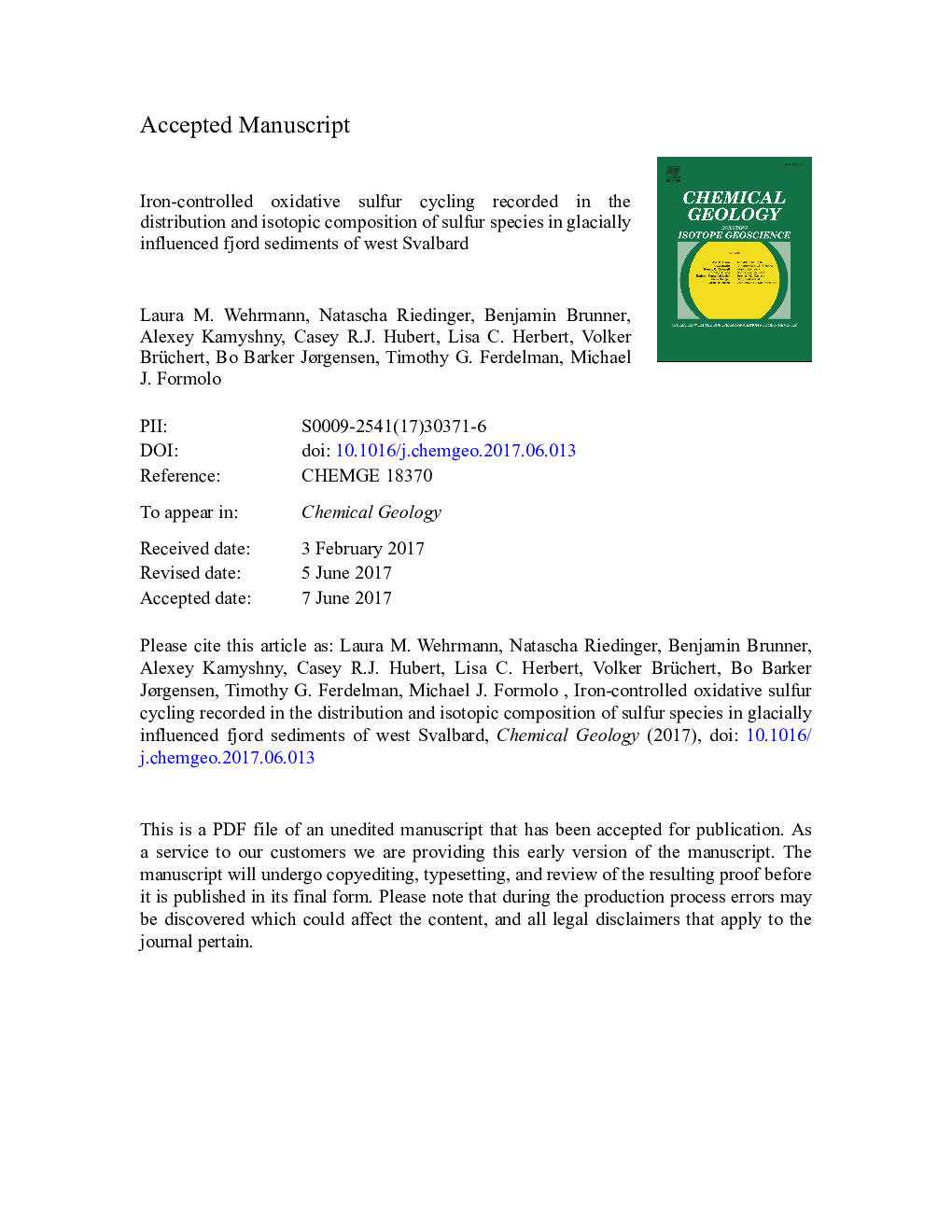| Article ID | Journal | Published Year | Pages | File Type |
|---|---|---|---|---|
| 5782867 | Chemical Geology | 2017 | 67 Pages |
Abstract
This study investigates how glacially delivered reactive iron (oxyhydr)oxide and manganese oxide phases influence the biogeochemical cycling of sulfur in sediments of three Arctic fjords and how the biogeochemical signatures of these processes are preserved. Results reveal differences in the concentrations of dissolved iron and manganese in pore-waters and the concentration of solid-phase sulfur species within individual fjords and amongst the three fjords, likely controlled by the varying input of reactive iron (oxyhydr)oxides to the sediment. Broadly, the stations can be divided into three categories based on their biogeochemical signals. Stations in the first category, located in Smeerenburgfjorden, are characterized by relatively low concentrations of (easily) reducible particulate iron phases, increasing concentrations of iron monosulfides, pyrite, and elemental sulfur with depth, and low pore-water dissolved iron and manganese concentrations. Biogeochemical processes at these stations are primarily driven by organoclastic sulfate reduction, sulfur disproportionation and the subsequent reaction and sequestration of sulfide in the sediment as iron monosulfide and pyrite. Sulfur and oxygen isotope values of sulfate display progressive enrichment in heavy isotopes with depth at these stations. In contrast, concentrations of (easily) reducible particulate iron phases and pore-water dissolved iron (up to 850 μM) and manganese (up to 650 μM) are very high at stations of the second and third category, located in Kongsfjorden and Van Mijenfjorden, while iron monosulfide and pyrite contents are extremely low. The amount of pyrite and its isotope values in conjunction with organic sulfur compounds provide evidence for a detrital origin of a fraction of these sulfur compounds. At the Kongsfjorden and Van Mijenfjorden stations, oxidative pathways of the sedimentary sulfur cycle, controlled by the high availability of reducible particulate iron phases, play an important role, leading to the effective recycling of sulfide to sulfate through sulfur intermediates and concomitant resupply of the sulfate reservoir with 32S. In both fjords, elemental sulfur was only detected at the outer fjord stations grouped into the third category. Our study provides a framework for interpreting the Fe-S-C geochemistry of similar continental shelf areas in modern settings and ultimately for identifying these environments in the rock record.
Related Topics
Physical Sciences and Engineering
Earth and Planetary Sciences
Geochemistry and Petrology
Authors
Laura M. Wehrmann, Natascha Riedinger, Benjamin Brunner, Alexey Jr, Casey R.J. Hubert, Lisa C. Herbert, Volker Brüchert, Bo Barker Jørgensen, Timothy G. Ferdelman, Michael J. Formolo,
